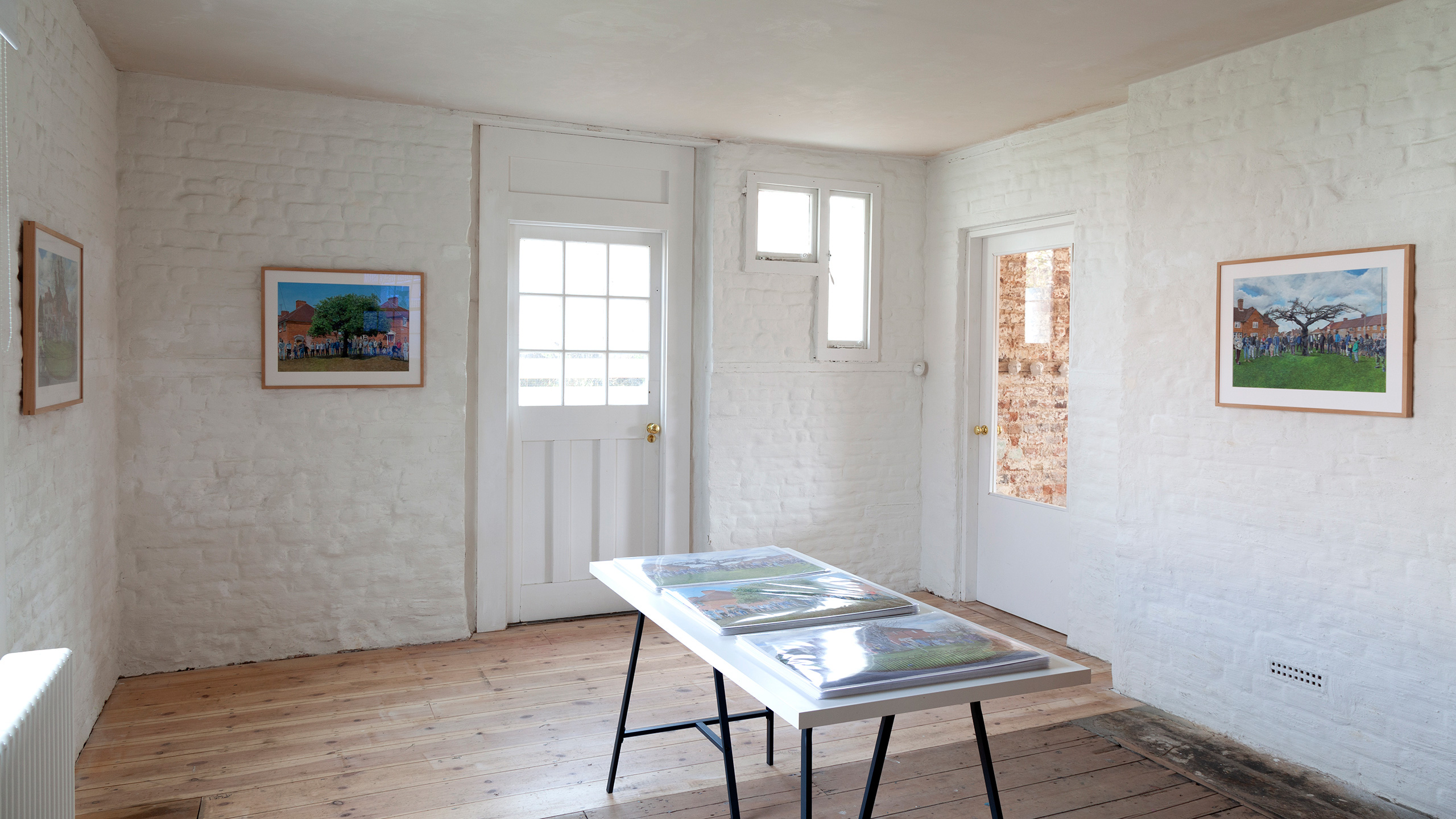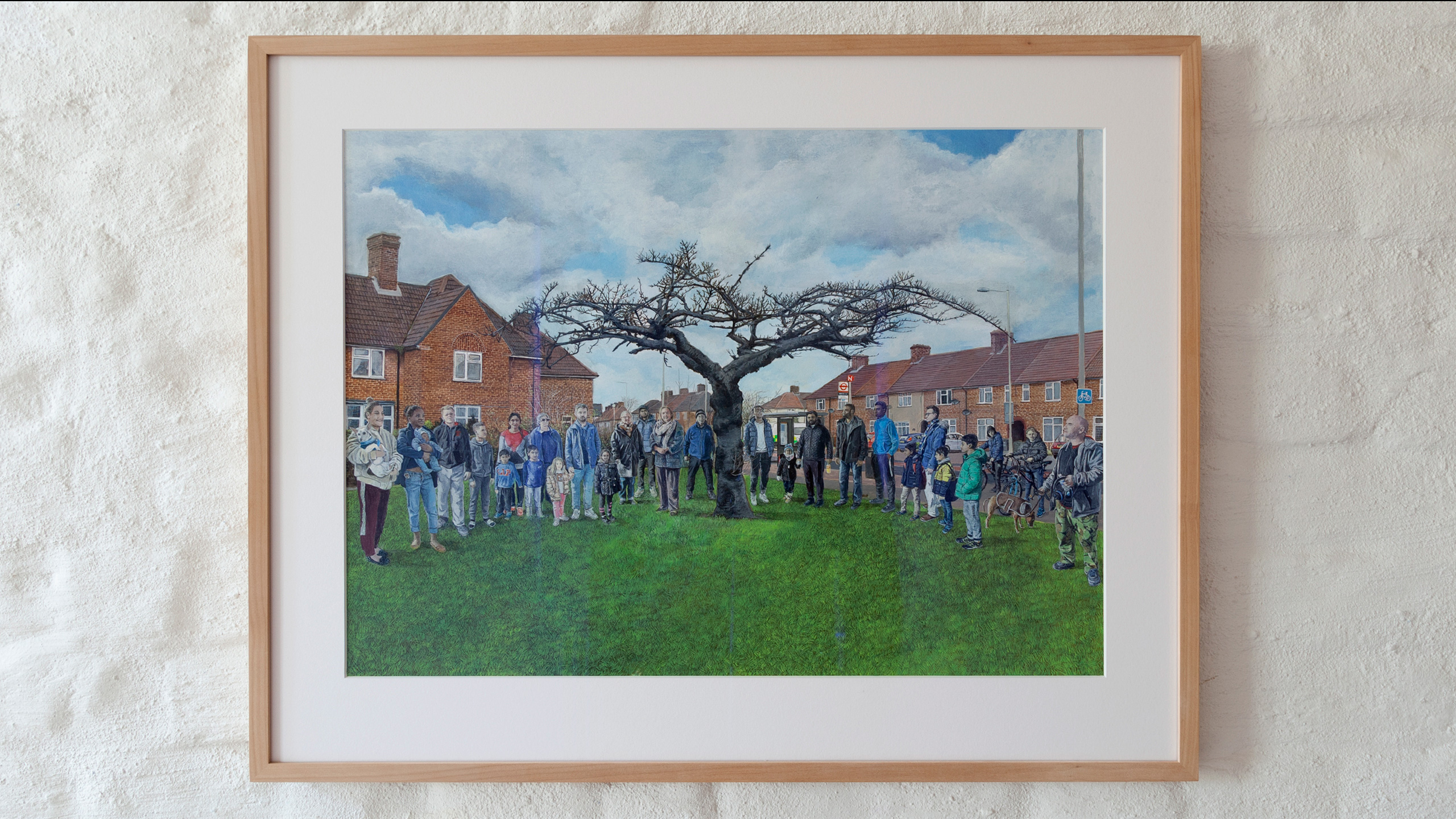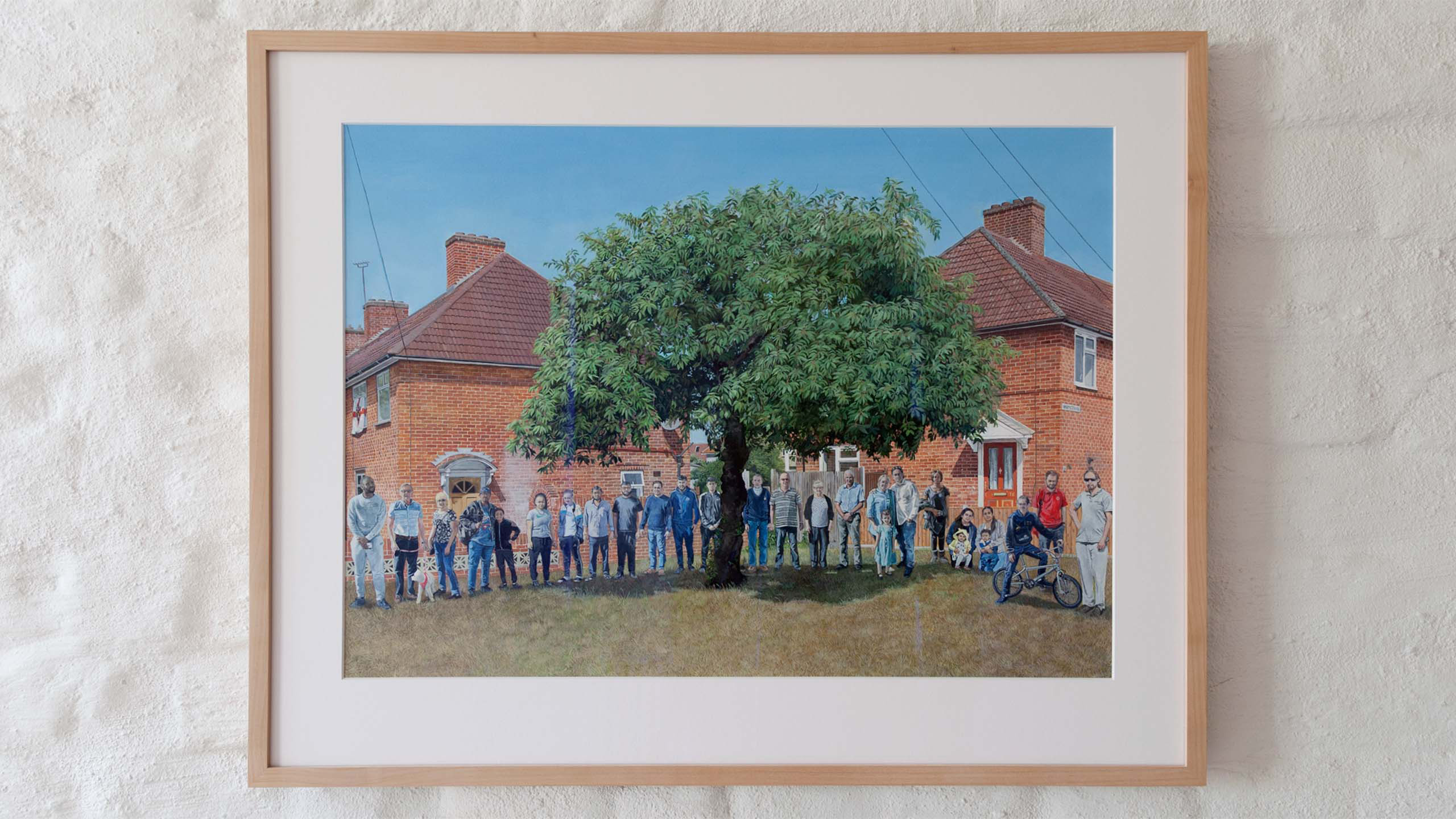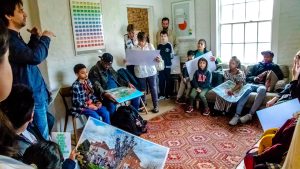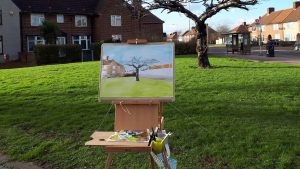The paintings were made in Dagenham’s Becontree Estate (East London), once the biggest municipal housing project in the world. The starting point was the meaning of the name ‘Becontree’, which derives from the words ‘Beacon’ and ‘Tree’. The original tree indicated the location where early hundred meetings took place. The project proposed a reenactment of this tradition through a series of paintings (en plein air) of characteristic trees on the green corners in the Becontree estate. Whenever passersby showed interest in the painting, they were asked if they wanted to be included in the picture. The finished paintings got exhibited at a local art center, The White House. All 80 participants received an invitation for the opening of the exhibition and were given a printed copy.
During my stay in Dagenham, as part of a research program of the V&A (VARI) and Create (the White House) in London, I concentrated on the neighbourhood around The White House; the Becontree Estate, once the largest social housing estate in the world but today a large London suburb. My proposal dealt with the huge contrast between the utopian ideals from the time before the construction of the estate and its dystopian reality of today, as Dagenham is known, amongst other things, for its social isolation and low levels of civic participation. These issues seemed particularly important as the organisers of the residency were looking for an artist who could “create encounters with new constituencies” and who would be able to “meet local residents in Dagenham”. At first these objectives didn’t seem impossible but I soon discovered that in Dagenham these things are nothing less than an utopian undertaking in itself.
As soon as I learned more about the history of the Becontree Estate, I found out that the lack of social cohesion is nothing new and even intrinsically linked to the planning of the neighbourhood itself, almost a hundred years ago. From its beginning, the estate had to deal with the lack of social cohesion and the absence of proper community life. This indifference to the public realm has opened a dangerous void in more recent time. It’s not surprising that the borough of Barking and Dagenham was one of the five London boroughs (from the 32) that voted to leave during the Brexit referendum in 2016.
With the context in mind I initiated the project ‘Beacon Tree’. The work exists of three paintings that were made on three different locations within in the neighborhood. The starting point was the meaning of the name ‘Becontree’, as recorded in the Domesday Book of 1086, which derives from the words ‘Beacon’ and ‘Tree’. Dagenham’s beacon tree is an example of what is called a ‘trysting tree’; trees that were meeting places for social, political and religious gatherings. The original tree, once located at what is now known as ‘Becontree Heath’, indicated the location where early hundred meetings took place. The name was then reused by the architect of the Estate in order to provide the new settlement with some historical continuity.
The project proposed a reenactment of this tradition through a series of paintings (en plein air) of characteristic trees on the green corners in the Becontree estate. Whenever passersby showed interest in the painting, they were asked if they wanted to be included in the picture. When the paintings were finished I called everyone and invited them for the final exhibition at The White House. All received a printed copy and they were able to meet the other residents. During the gathering I asked the participants to think of alternative reasons why they could have gathered around the tree. For which ideal would they want to protest and gather?


